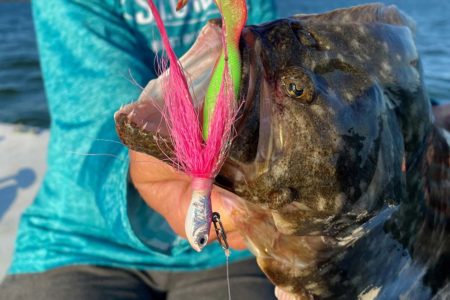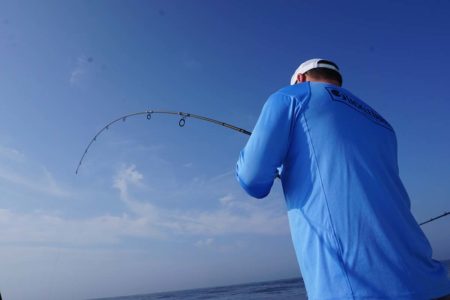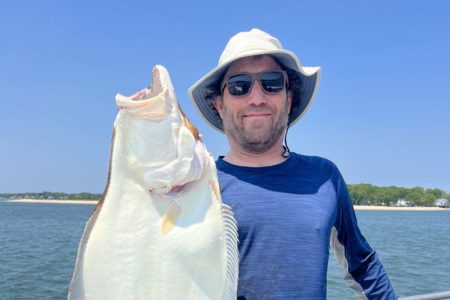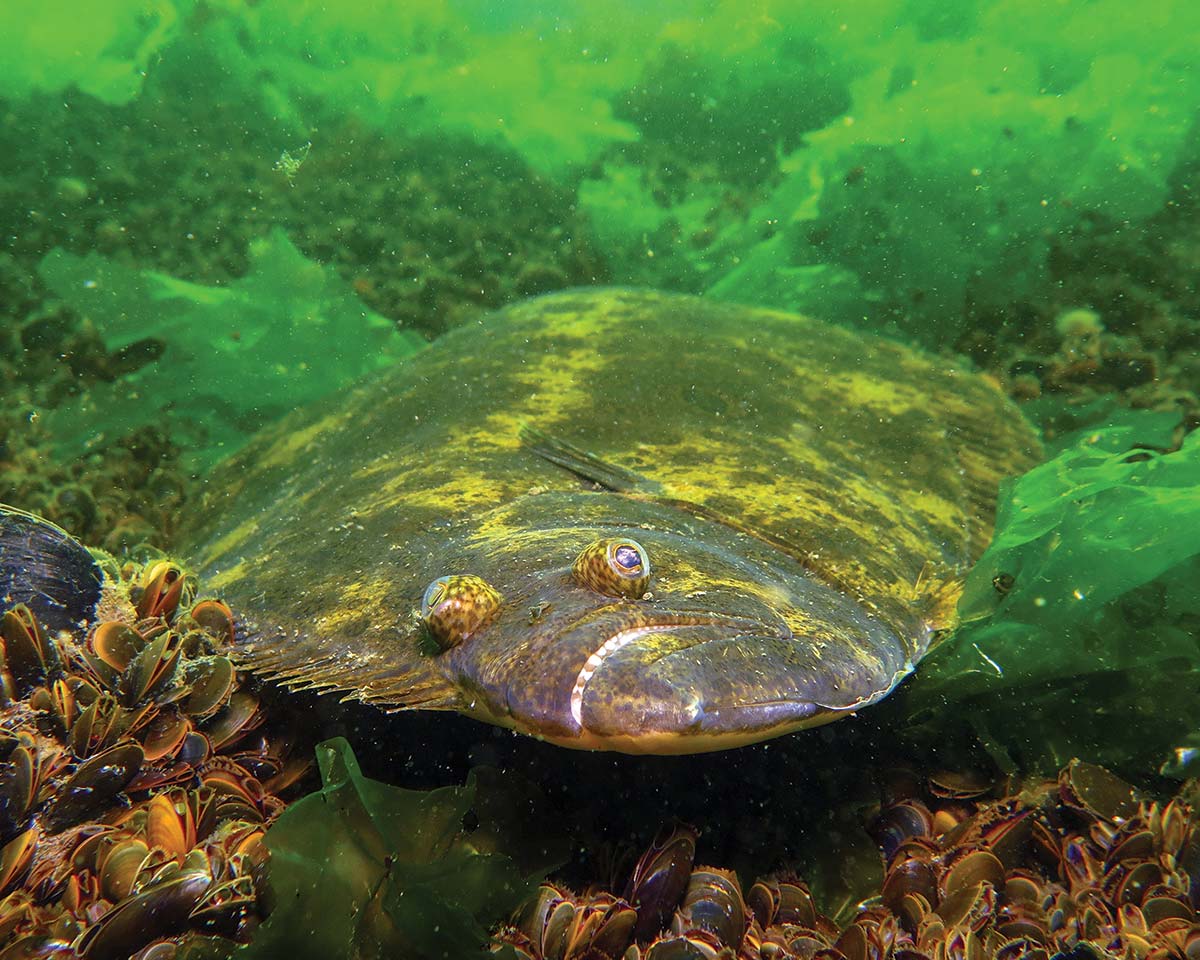
Understanding a fluke’s lifestyle will help you catch more of them.
One of the most popular gamefish in our local waters is the summer flounder, aka fluke. This flatfish can be easily targeted from shore, docks, or by boat. You can find them in the calm, protected bays, as well as in the deeper waters of the ocean. Their wide-reaching range makes them a suitable target for the fair-weather and adventurous anglers alike. Even though they are common, I find that many anglers do not fully understand the lifestyle of this highly sought-after fish.
Fluke are often referred to as a flatfish, but this name is a bit deceiving. They are flat, but not flat in the way you may think. They are laterally compressed (flattened from the sides, like a porgy) rather than dorsally flattened (flattened from top and bottom, like a stingray). To better understand this, you must look at the larval development of a fluke. Upon hatching from an egg, they swim upright like most fish that we are familiar with. As the larval fluke develops, it will go through a transformation where one eye will migrate to the other side of the fish’s head. With both eyes on the same side of its body, the fluke will lie down on its eyeless side and begin to take on its benthic (bottom) lifestyle.
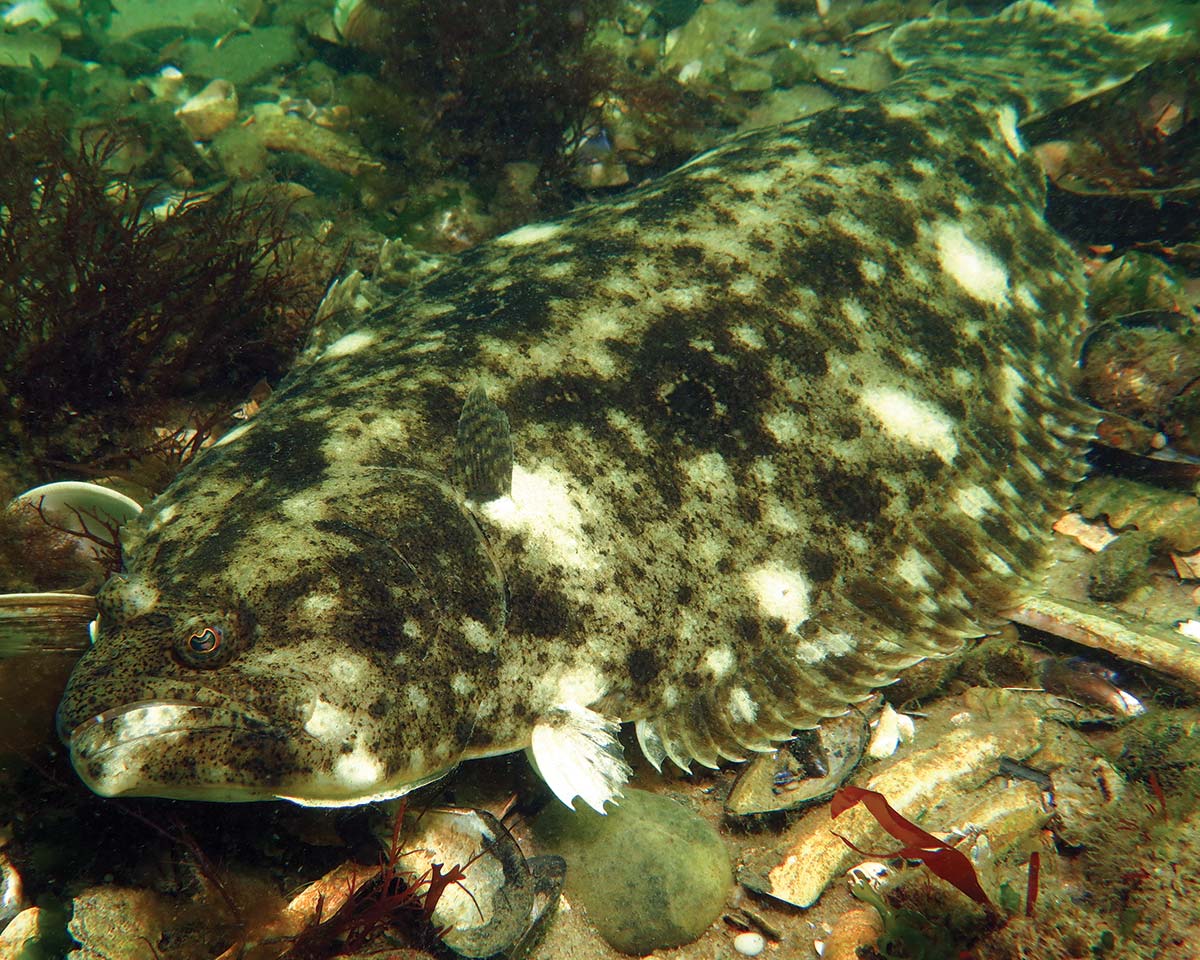
An Array Of Bottom
Fluke are masters of camouflage and are well-suited for life on the bottom. They can change their color and pattern in an instant to match their surroundings. For added concealment, with a flick of their tail, they can bury in the substrate, leaving only their eyes exposed. These traits are extremely important to possess, as fluke are ambush predators that lay motionless on the bottom, waiting for unsuspecting prey to swim within reach of their large mouths full of sharp teeth.
The downward-sloping edge of sandbars, channels, and salt marshes are ideal ambush locations, especially on an ebbing tide. At high tide, baitfish will flood onto the flats of a sandbar or hide among the tangle of salt marsh plants for protection. As the tide recedes, the baitfish are forced to leave these safe havens or risk being left high and dry at low tide. As the baitfish venture into the deeper water, fluke, along with other predatory fish, will line up on these edges, waiting to gobble them up as they swim by.
If you head out on the water on any summer day, you will see numerous boats playing “leapfrog” with one another along the edge of one of these channels or sandbars. Observing this, one might surmise that fluke can only be found along these sandy, sloping bottoms. Although these spots are ideal ambush locations, fluke are well suited to hunt in many different types of bottom habitats.
As someone who spends a lot of time SCUBA diving the waters around Long Island, I have observed fluke in many different habitats. One area I frequently explore is the shallows (2-4’ depths) of eelgrass meadows and seaweed patches. Although fishing in these weedy areas can be extremely difficult due to the dense vegetation, they are nursery grounds for a wide variety of fish, shrimp, crabs, and other invertebrates. In other words, they offer a smorgasbord of quarry for a voracious fluke. It has been my experience that fluke will settle on small patches of open bottom among the weeds. Here they will lie and wait for something to leave the safety of the cover and then pounce on it. I have witnessed this same behavior around hard structures such as mussel beds, rock piles, and wrecks. With all the nooks and crannies of such hard structures, there is a plethora of places for potential meals to hide. The key to finding fluke is to find their food.
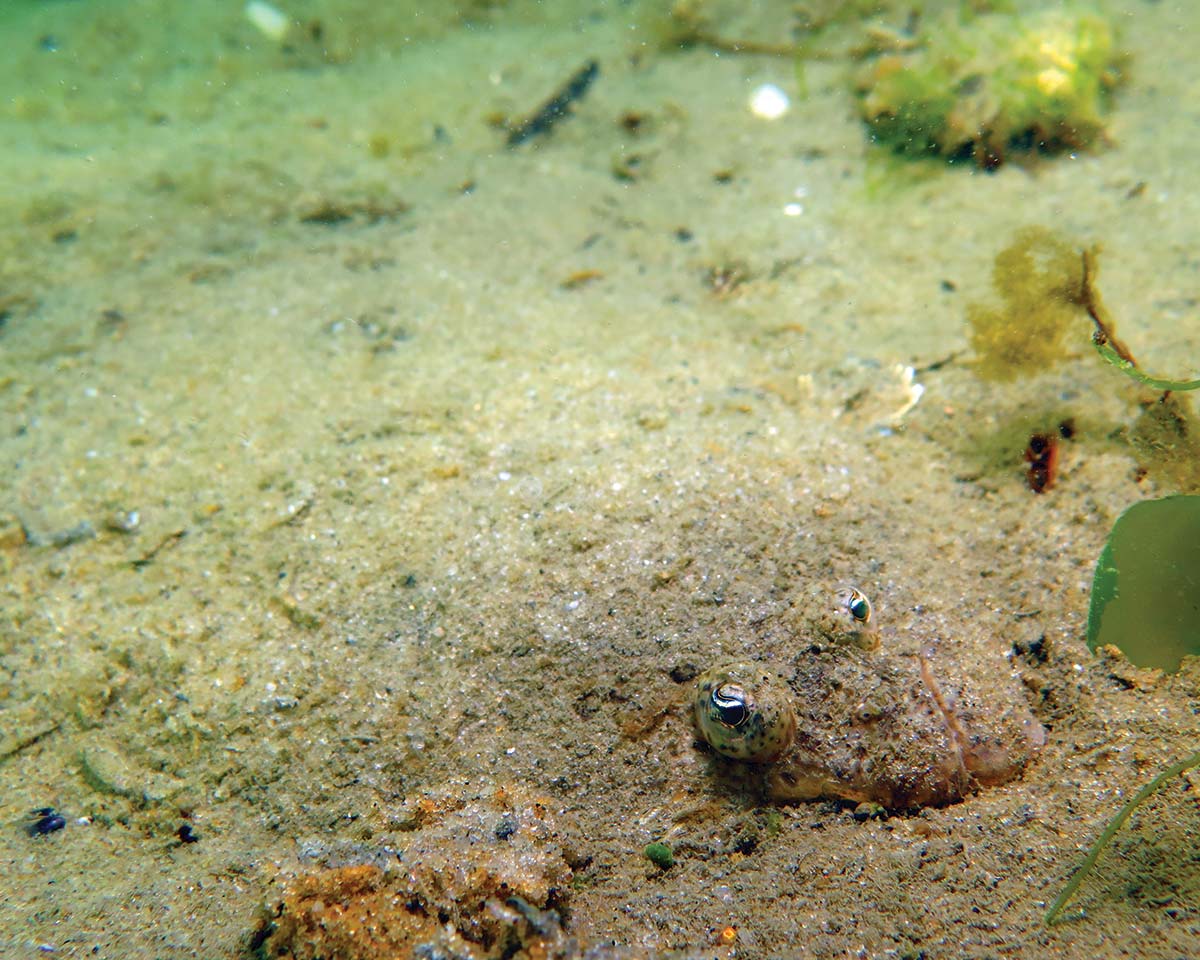
Fluke Forage
So, what exactly do fluke feed on? The short answer is if they can fit it in their mouth, it is on the menu. Being familiar with a fluke’s diet will allow you to make better decisions when digging through your tackle box and looking for the perfect rig. Small (1 to 4-inch) baitfish such as killifish, silversides, and sand lance (aka sand eels) are superabundant throughout the bays during the spring and summer months. By fall, juveniles of other gamefish such as bluefish, weakfish, winter flounder, and sea robins are plentiful and provide another, larger food source.
In addition to fish, fluke also have a fondness for invertebrates. Lady crabs (aka calico or sand crabs) are brightly colored swimming crabs that are abundant along sandy bottoms. Even though these crabs are quite the formidable predator themselves, with a hard shell and powerful claws, they stand no chance against a big hungry doormat. And let’s not forget about every fluke’s weakness, squid. During the late spring, squid enter local bays to spawn, and fluke will be right behind them.
| ABOUT THE AUTHOR |
| With a degree in marine biology from LIU/Southampton, Chris Paparo is the manager of Stony Brook University’s Marine Sciences Center. Additionally, he is an award-winning member of the Outdoor Writers Association of America and the NYS Outdoor Writers Association. You can follow Paparo on social media at @fishguyphotos |
As I mentioned earlier, if it fits in their mouth, a fluke will eat it. While working at a public aquarium, I would feed our fluke whole herring that were at least a 1/3 of their own body length, and they had zero problems swallowing them. A doormat will feast on small and large prey alike but using a larger lure or a big bait will help to filter out many of the smaller, undersized fish.
Now that you are armed with the knowledge of a fluke’s lifestyle, break away from the game of leapfrog, and explore new places throughout the bay and ocean. You never know where that doormat might be lying and catching one in a non-typical location will be extremely rewarding.
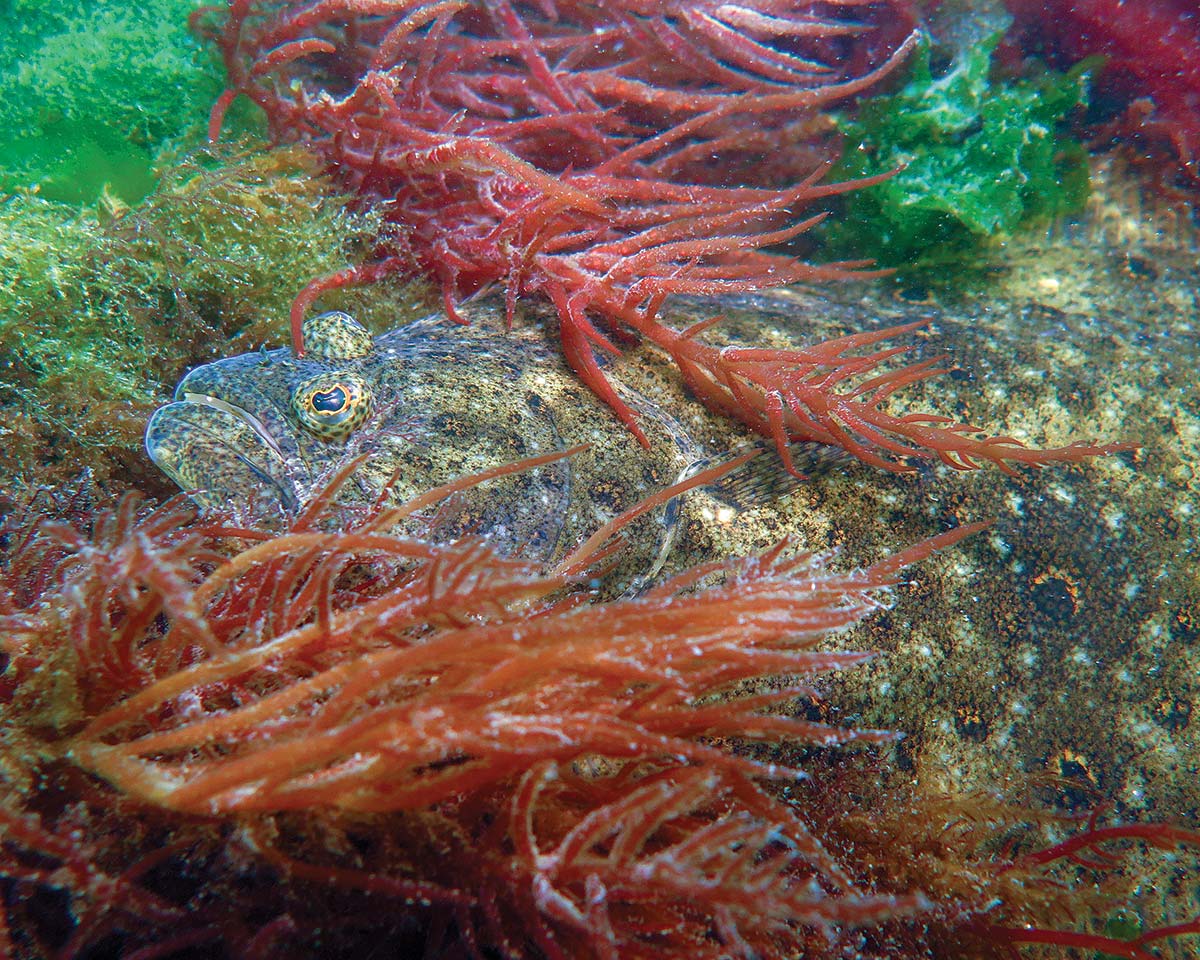
Insights From The Editors
NEW JERSEY
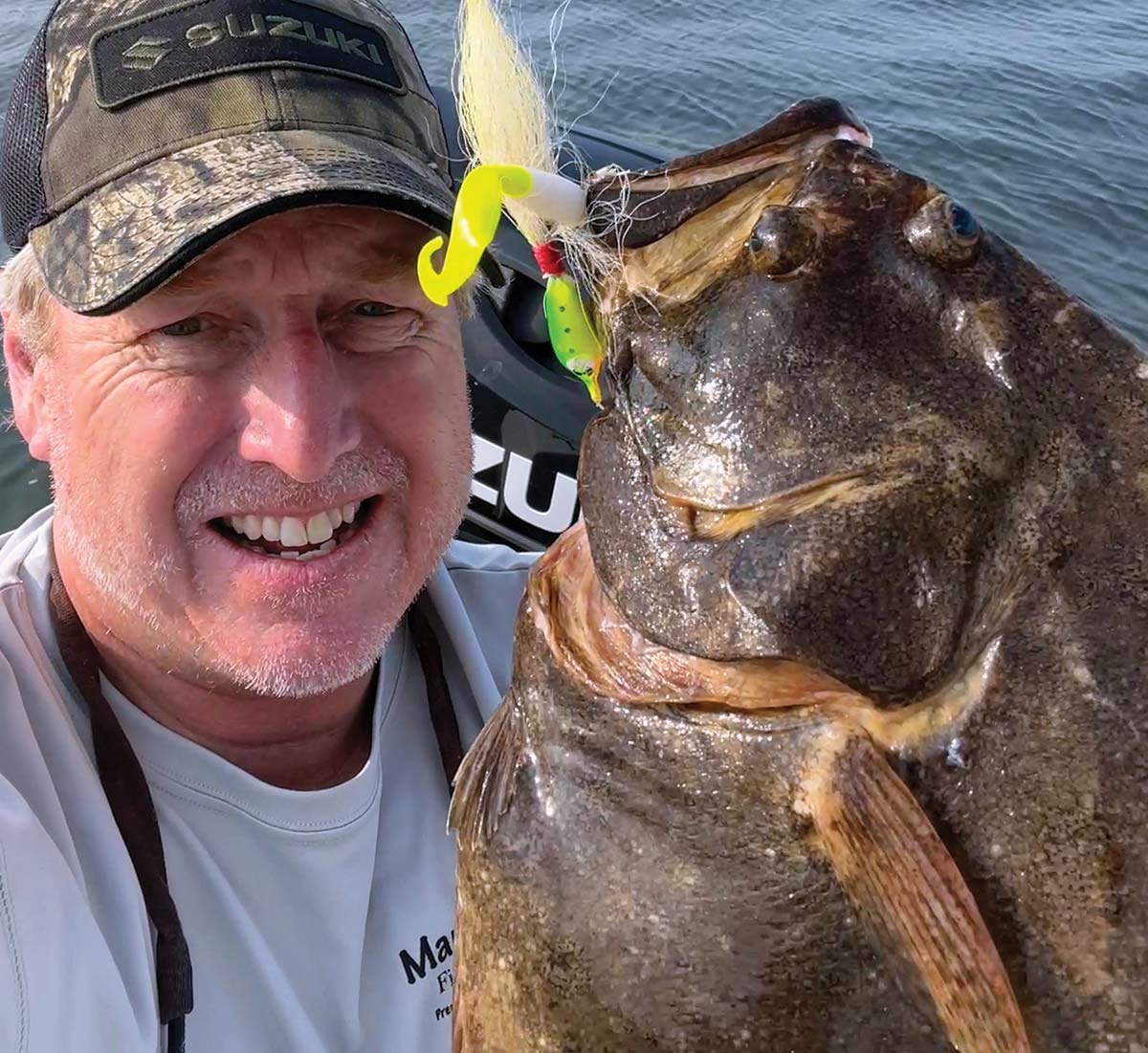 While fishing incoming tide on upper Barnegat Bay on July 2, the temperature gauge on my Lowrance read 72 degrees; it was good start to the holiday weekend when a 26-inch fluke on the muddy bottom nabbed my Tinman Lures floating jighead tipped with yellow “firetail” Gulp swimming mullet. However, by the Fourth of July while fishing the same stretch on outgoing water, by temps were up into the mid-80s and the bite turned “picky.” This pretty much describes the half-way point of the New Jersey, Delaware Bay fluke fishery; as water temps increase, summer flounder head for deeper, cooler waters.
While fishing incoming tide on upper Barnegat Bay on July 2, the temperature gauge on my Lowrance read 72 degrees; it was good start to the holiday weekend when a 26-inch fluke on the muddy bottom nabbed my Tinman Lures floating jighead tipped with yellow “firetail” Gulp swimming mullet. However, by the Fourth of July while fishing the same stretch on outgoing water, by temps were up into the mid-80s and the bite turned “picky.” This pretty much describes the half-way point of the New Jersey, Delaware Bay fluke fishery; as water temps increase, summer flounder head for deeper, cooler waters.
The shipping channels throughout Raritan Bay and outside NY Bight become an August mecca for doormat hunters; same outside of Delaware Bay, especially in the 90- to 120-foot depths at the Old Grounds upwards of 20 miles from the tip of Cape May (and in close proximity to Delaware Reef Site 11). No doubt, the best of the late summer fluke action in August can be found at wrecks and snags off the beach (on the beach too, as jigheads tipped with Gulp or Fishbites Fight Club are highly effective in the sloughs in the local surf).
Unlike early season back bay fluking along the flats and muddy channel edges, prepare to lose tackle working the structure edges at the New Jersey, Delaware artificial reef sites. Fish heavy bucktails or chrome balls with teasers as vertically as possible to maintain minimal but necessary contact with the bottom. – J. Hutchinson
New York
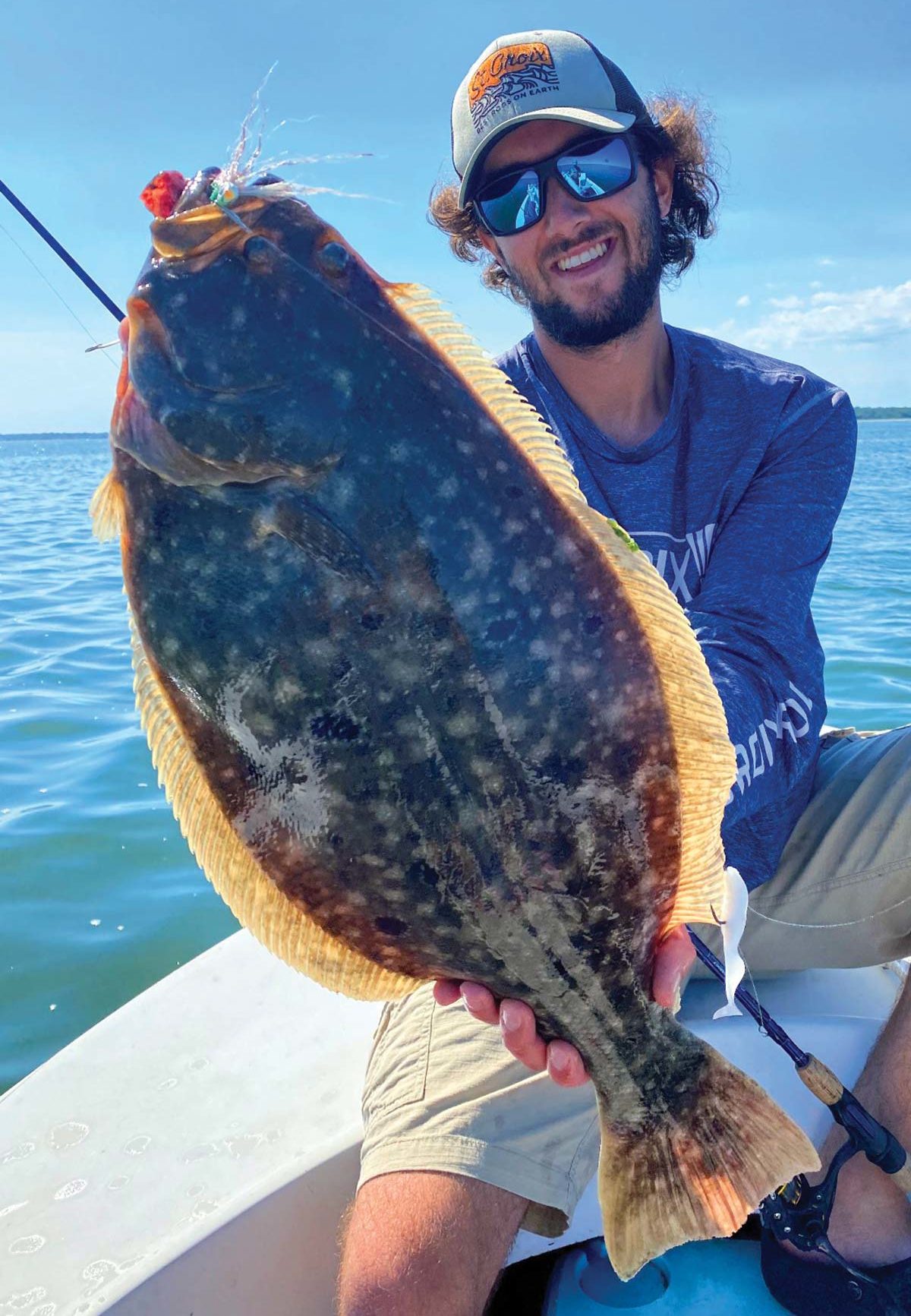 The fluke bite sees a distinctive split in New York waters during the month of August. Some go deep in the ocean, probing around the wrecks, reefs and open bottom for a shot at a true monster, in excess of 10 pounds, while others stick to the bay game and scale down their tackle to anywhere from ¼ to 1-ounce jigs and fish water from 2 to 15 feet where you can just about see a fluke pounce on a presented bait.
The fluke bite sees a distinctive split in New York waters during the month of August. Some go deep in the ocean, probing around the wrecks, reefs and open bottom for a shot at a true monster, in excess of 10 pounds, while others stick to the bay game and scale down their tackle to anywhere from ¼ to 1-ounce jigs and fish water from 2 to 15 feet where you can just about see a fluke pounce on a presented bait.
The bulk of my deep water fluking takes place in no other waters than those off the south side of Montauk, in depths of over 100 feet. For the deep, bigger baits get better looks from big fluke. I like to drop down the largest grubs from Fishbites, Gulp and Z-Man on either a bucktail or plain fluke rig. Don’t be afraid to go natural though. Some of my best days in this area came with the use of large strip baits from bluefish, mackerel or fluke belly.
The shallow bays see an entirely different presentation. All my tackle, rigs and bucktails are scaled down to mimic most of the small forage that summer fluke will find within Long Island’s bays during the month of August. Three to 5-inch Gulp minnows and grubs along with 5-inch Fishbites grubs get the nod from me on the back of the lightest possible bucktails I can use while staying in touch with the bottom. – M. Broderick
New England
Fluke fishing in New England has changed a lot over the past decade or so. Big fluke just aren’t as widespread as they once were, but that doesn’t mean you have to make long rides to Nantucket Shoals, Block Island or Montauk to get them. Local fluke fanatics tell me time and time again that the biggest fish are just in tighter spots nowadays. Andrew Nichols, owner of Fishin’ Factory 3 in Middletown, CT is a dedicated fluke fisherman and he told me, “one thing I have learned in more recent years is that the biggest fluke are often set up on the up-current side of structure. You might think that they’d prefer to lay ‘downwind’ and out of the current, but these big fish are also opportunistic and they probably set up there to get the first shot at whatever drifts by.” Reading between the lines here, you should be actively fishing well before your drift puts you on the hump, bump or ledge you’re targeting. Bill Proulx, who recently broke the Connecticut state record with a 15.3-pounder suggests, “big fluke love nasty structure, boulder fields and rugged bottom, I don’t fish right in that stuff, but I try to target open lanes of bottom right up against it. I also fish large whole baits, like full-sized squid, when I’m in a good spot for big fish.” The last piece of advice has been repeated to me over and over by many great fluke anglers and that is to make short drifts over prime pieces of structure. Back in the day, long drifts through fishy areas were the norm, but as consistency has gotten tougher to nail down, focusing on prime bottom will put more keepers and doormats in the boat. –D.Anderson

